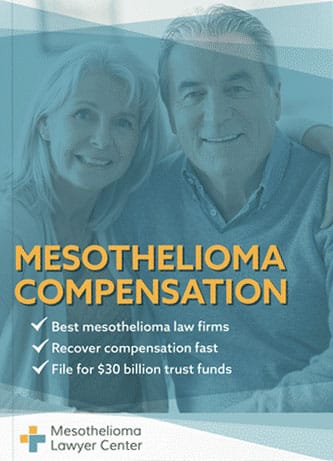The dangers of asbestos in older homes are significant, especially during renovation or repair work. Homes built before the 1980s may still contain asbestos in siding, vinyl flooring, insulation, and many other materials. Exposed or damaged asbestos in older homes can cause exposure and put residents at risk for asbestos illnesses like mesothelioma.
If you or a loved one have mesothelioma, asbestosis, or asbestos-related cancer, you may be eligible for a large amount of compensation. Currently, there is over $30 billion in trusts set up for those who have been diagnosed with an asbestos-related illness. Fill out our form to receive our free Financial Compensation Packet. Our packet is loaded with information on experienced mesothelioma attorneys in your area, how to file a claim for asbestos trust funds, how to get paid in 90 days, and more.
Where Asbestos Hides: Floor Tiles, Sheetrock, and Texas Wool Insulation
Asbestos isn’t just a relic of the past—it still lurks in many older homes and buildings. In this video, David Foster sheds light on common materials that may contain asbestos, including floor tiles, sheetrock, and insulation products like Texas Wool.
Disturbing these materials without the right precautions can release dangerous fibers into the air, increasing the risk of mesothelioma and other serious health conditions. This video explains the importance of using proper personal protective equipment (PPE) and knowing when to call in professionals. If you’re planning renovations or managing an older property, understanding asbestos safety is essential.


FREE Financial Compensation Packet
- Info on law firms that will recover your HIGHEST COMPENSATION
- Learn how to get paid in 90 days
- File for your share of $30 billion in trust funds
Asbestos in Older Homes
Many industries used asbestos widely for decades. The construction industry used asbestos more heavily than almost any other industry. It used asbestos for its ability to insulate, protect against fire, and add strength to materials.
Millions of houses, apartment buildings, and other dwellings built between 1940 and the early 1980s were built with components and materials made with asbestos.
Asbestos use by the construction industry decreased sharply in the late 1970s after the U.S. Environmental Protection Agency (EPA) reported that exposure to asbestos posed severe health risks. Since then, products such as roofing panels, cement, and insulation have been made with alternatives to asbestos.
Industries were given a “phase out” period, meaning they had a certain amount of years to stop using asbestos. Although the EPA placed regulations on asbestos use in the late 1970s, many homes were still built with it over the next few years before companies stopped using it.
Many Americans still live in older houses built before the construction industry stopped using asbestos. If you live in a house or apartment built between the 1940s and 1980s, it’s important to know what to do if asbestos is present in your home.
Is Asbestos in Your Home Dangerous?
If you live in an older home, you might be living with asbestos. Many homes were built with asbestos, but some were renovated to remove asbestos materials.
Asbestos is harmful because it sheds tiny fibers that can be inhaled or ingested. Asbestos fibers cause damage inside the body that can lead to serious illness. Not everyone exposed to asbestos will get sick, but it is always a significant risk, and no amount of asbestos exposure is safe.
Asbestos in older homes that are well-contained poses minimal exposure risks. The danger occurs when asbestos materials deteriorate, are damaged, or are disturbed by repairs or renovations. These activities can release fibers into the air, causing exposure.
Where Is Asbestos Found in Older Homes?
It is important to note that not all older homes contain asbestos. If you don’t know if your home has asbestos, it’s best to get a professional inspection. This is especially important if you are planning to do any renovations.
It is best to treat your home as if it contains asbestos until a state-certified asbestos professional can inspect the residence thoroughly.
In the meantime, it’s crucial to understand where asbestos could be in an older home:
- Attic insulation (typically vermiculite insulation)
- Corrugated cement roofing
- Vinyl floor tiling
- Window glazing and caulking
- Plasters and siding materials
- Old appliances such as furnaces and air conditioners
- Heating duct insulation
- Ceiling tile
- Hot water and steam pipes
- Flue pipes
- Cement, paper, and millboard sheets
- Textured paint
- Architectural cement pipe columns
- Artificial brick cladding
- Cement tile underlay
- Bathroom linings
- Eave linings
- Old electrical wiring insulation
Sources of Asbestos Exposure in Older Homes
While many older materials in a home can contain asbestos, certain areas and scenarios pose the greatest risks:
- Vinyl Flooring. Vinyl floor tiles and adhesives often contained asbestos to make them stronger, fire resistant, and insulating. Removing and replacing flooring is a home improvement task many people take on themselves, not realizing asbestos could be an issue. Exposure can occur when scraping up the decaying tiles and adhesive. This stirs up asbestos fibers.
- Textured Paint. Many homeowners also tackle the removal of textured paint, like popcorn ceiling treatments. These materials were once made with asbestos. As with flooring, scraping off paint creates dust that could be contaminated with asbestos.
- Attic Renovations. Many homeowners want to replace attic insulation to save on energy costs, but older homes often used vermiculite insulation that contained asbestos. Removing this without professional guidance can be dangerous.
- Asbestos-Wrapped Pipes. Many older pipes were wrapped in asbestos lagging to insulate them and reduce heat loss. Not many homeowners do their own plumbing work, but they can be exposed if these older pipe materials begin to deteriorate over time and release fibers. Plumbers who don’t take precautions can disturb the fibers and contaminate the home.
- Home Mechanics. Asbestos can be present in the garage as well, and home mechanics risk exposure. Older cars may have asbestos brakes or clutches. Hobbyists who remove and replace these parts without proper precautions can be exposed to asbestos.
These are just some of the more common situations in which a homeowner might come into contact with harmful asbestos fibers.
How Can I Identify Asbestos?
This is tricky for typical homeowners, so it’s best to have a professional inspection done.
What Does Asbestos Look Like?
Asbestos is a fibrous material that is usually white but might be other colors. It isn’t easy to identify it just by looking at it, especially if it is bound up in another material. Some products might have the word asbestos on them, but many don’t.
Is There a Test for Asbestos?
The only way to know for sure if something is asbestos is to test it. You can get a home asbestos test kit. To use it, you will gather a sample of the material and send it to a lab. Testing can cost $100 or more per sample.
Collecting and testing your own samples is risky. You can create exposure risks if you don’t take the right precautions. It’s always better to work with a professional, licensed asbestos professional or company.
What to Do if Your Home Contains Asbestos
If you suspect your home may contain asbestos, contact a qualified asbestos professional for assistance. In the meantime:
- Don’t work around, repair, or renovate any areas that may contain asbestos.
- If you have children, make sure they don’t play or roughhouse near any areas that may contain asbestos.
- Don’t load any boxes, clean up, or walk around in the attic.
- Don’t sweep up or vacuum around areas that may contain asbestos.
- Don’t saw, sand, or scrape around areas that may contain asbestos, and never drill holes in the walls for any reason.
An inspector can recommend an asbestos abatement company to have the materials safely removed. Or, they might suggest that you keep it in place. If asbestos materials are well-contained and in good condition, they pose little risk of exposure.
The Dangers of Asbestos When Disturbed
If asbestos is crushed, drilled, excavated, or otherwise disturbed, even by natural erosion, the fibers become airborne.
When released into the air, the fibrous dust can enter the body by inhalation or swallowing. The risk is particularly high in enclosed areas with poor ventilation.
Once inside the body, these microscopic fibers can become firmly lodged inside the lining of the chest, heart, or abdomen.
Once ingested, the body can’t expel all of the fibers. Over time, asbestos fibers cause lesions in several tissues in the system. The lesions fester and can eventually mutate into cancers of the lung or the mesothelium.
By the time asbestos fibers start damaging the body, many years may have already passed.
The dormancy period of asbestos-related diseases can last for decades. Some of the early signs of asbestos illness include:
- Chest pain
- Difficulty swallowing
- Pain when inhaling
- Fluid effusion
- Nausea
- Reduction in chest expansion
- Dry coughs that may be accompanied by wheezing
- Unexplained weight loss
- Fever
If You Have Been Exposed to Asbestos in an Older Home
If you think you were exposed to asbestos in your home or other older buildings, talk to your doctor right away. They can discuss your risks of developing an asbestos illness and offer screenings for earlier detection.
If you have an asbestos illness, contact a mesothelioma lawyer to help you determine the source of exposure and to seek compensation. Many of the companies that supplied asbestos to the construction industry can still be held accountable for damages through lawsuits or asbestos trust fund claims.
More Information
Remember, if you’ve been diagnosed with mesothelioma or asbestos-related cancer, you may qualify for significant compensation. Remember to fill out our form for your free Financial Compensation Packet, with information on asbestos and mesothelioma lawyers in your area. If you need additional assistance, contact us toll-free at 800-793-4540.

Paul Danziger
Reviewer and EditorPaul Danziger grew up in Houston, Texas and earned a law degree from Northwestern University School of Law in Chicago. For over 25 years years he has focused on representing mesothelioma cancer victims and others hurt by asbestos exposure. Paul and his law firm have represented thousands of people diagnosed with mesothelioma, asbestosis, and lung cancer, recovering significant compensation for injured clients. Every client is extremely important to Paul and he will take every call from clients who want to speak with him. Paul and his law firm handle mesothelioma cases throughout the United States.
References
- Moore, A.J., Parker, R.J., and Wiggins, J. (2008). Malignant Mesothelioma. Orphanet J. Rare Dis. doi: 10.1186/1750-1172-3-34.
Retrieved from: http://www.ncbi.nlm.nih.gov/pmc/articles/PMC2652430/?tool=pubmed - Agency for Toxic Substances and Disease Registry. (2023, May 19). Where Is Asbestos Found?
Retrieved from: https://www.atsdr.cdc.gov/csem/asbestos/where_is_asbestos_found.html
